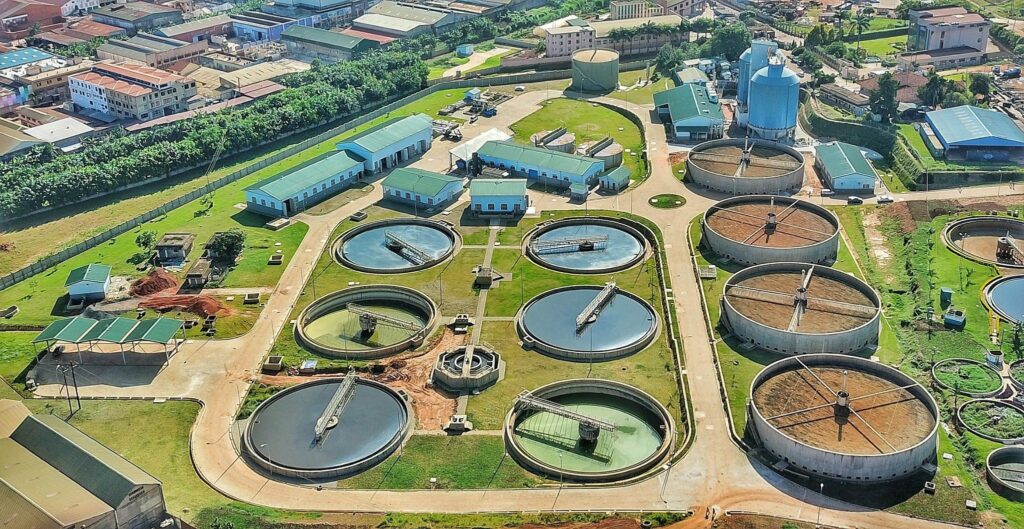Uganda has a major wastewater treatment plant. Seven years after the construction of the Bugolobi-Nakivubo wastewater treatment plant began, Silver Mugisha, the Managing Director of the National Water and Sewerage Corporation (NWSC), visited the project site to commission the new facility. The treatment plant meets the sanitation needs of the city of Kampala, located on the shores of Lake Victoria, with an estimated population of 4 million.
Read also: Urban sanitation, a major challenge for sustainable cities in Africa
The new treatment plant has a capacity of 45,000 m3 per day, making it the largest wastewater treatment facility in Uganda. The plant operates within a sewerage system that also includes 31 km of sewerage network serving Naguru, Ntinda, Nakawa, Bugolobi, Kyambogo, Kiwanataka, Banda, Kasokoso, Butabika and surrounding areas. Work also included the construction of an effluent pumping station on Kibira Road, as well as a pre-treatment station at Kiwanataka.
Cleaning up Lake Victoria
The construction of the Bugolobi-Nakivubo wastewater treatment plant is part of the Lake Victoria Protection Project II (LVP II), a component of the first phase of the Kampala Sanitation Programme. In addition to improving sanitation in the Ugandan capital, LVP II aims to find a sustainable solution to the rapidly deteriorating water quality in the inner and outer Murchison Bay of Lake Victoria. The pollution of this large East African lake by wastewater is destabilising its ecological balance.
NWSC Director General Silver Mugisha visits the Bugolobi-Nakivubo water treatment plant © NWSC
The construction of the Bugolobi-Nakivubo wastewater treatment plant was financed by the Ugandan government with support from the African Development Bank (AfDB), the French Development Agency (AFD), the European Union and the Kreditanstalt für Wiederaufbau (KfW), the German development agency. “The plant uses harmless technology and bio-filters and is odourless. It will serve the needs of more than 350,000 residents and the entire transient population of Kampala city,” says the state-owned NWSC. Work is not yet complete on the project site.
Sewage sludge recovery
According to Silver Mugisha, work is currently underway to revegetate the new facility, landscape it and complete the digesters. These facilities allow the fermentation of the sludge for the production of biogas. The combustion of this highly purified gas will allow the production of 630 kW of electricity.
The biogas plant is expected to provide part of the electricity needed to operate the Bugolobi-Nakivubo wastewater treatment plant. The residues from the sludge methanisation process will be distributed as fertiliser to local farmers.
Jean Marie Takouleu
